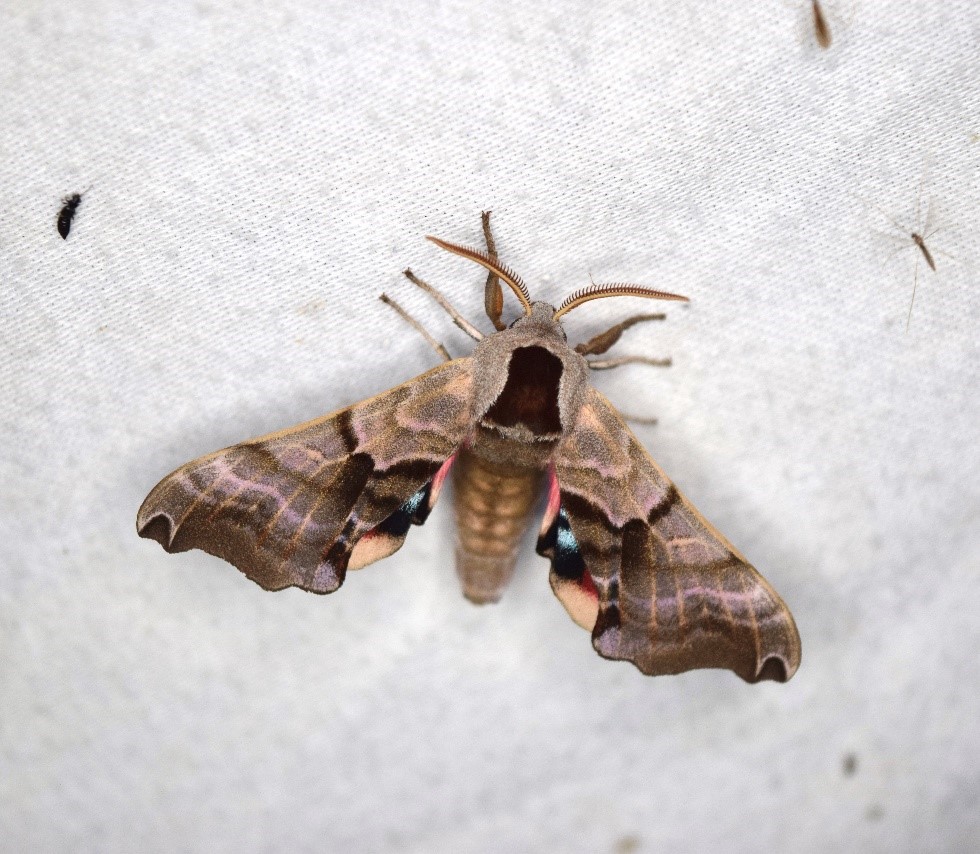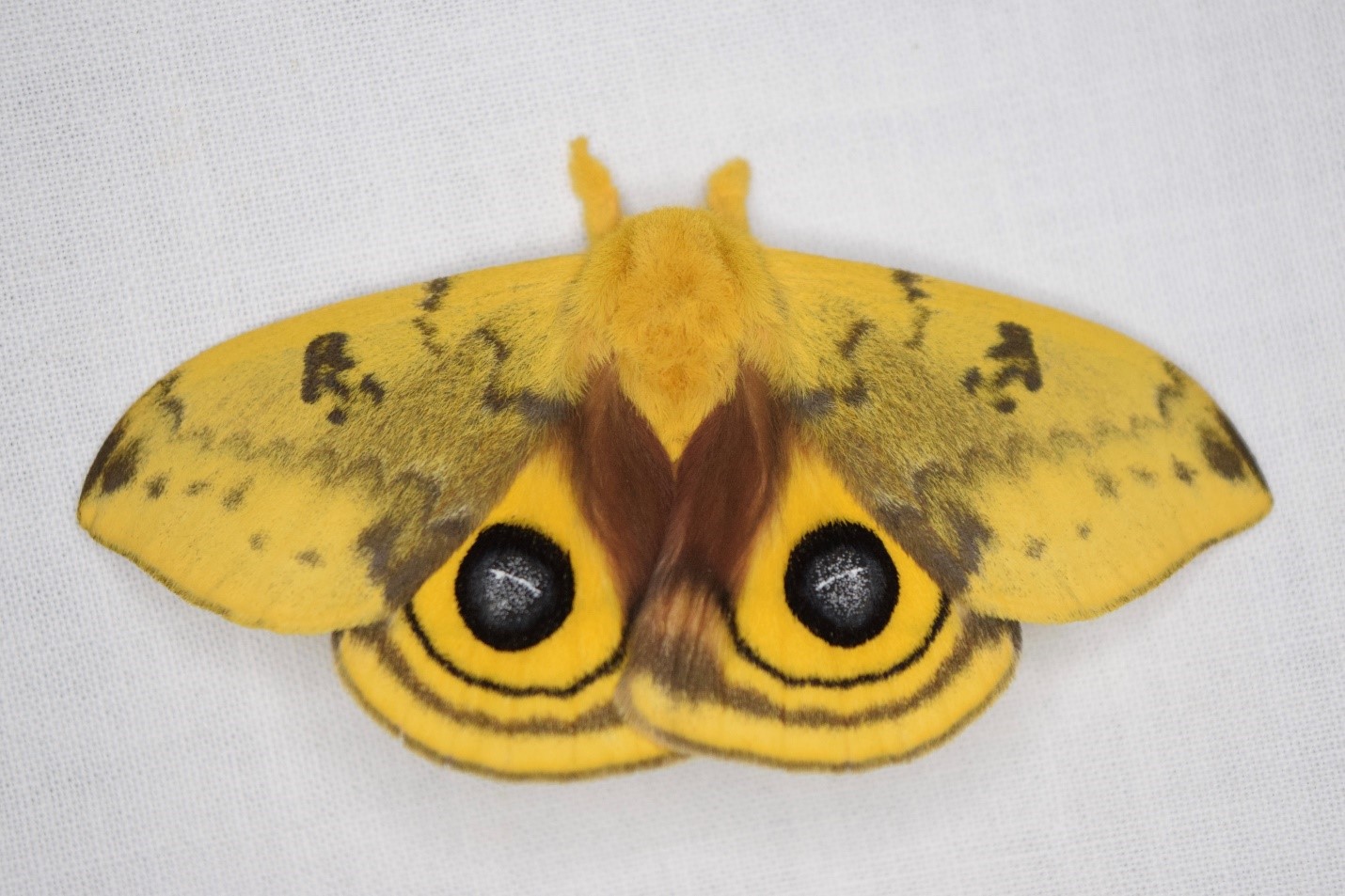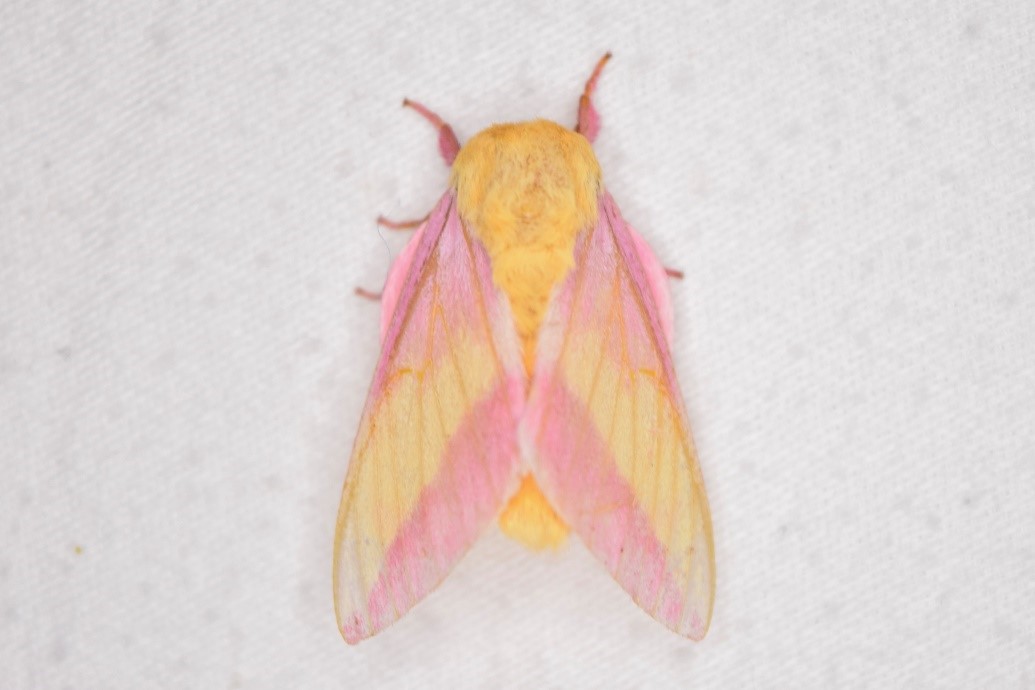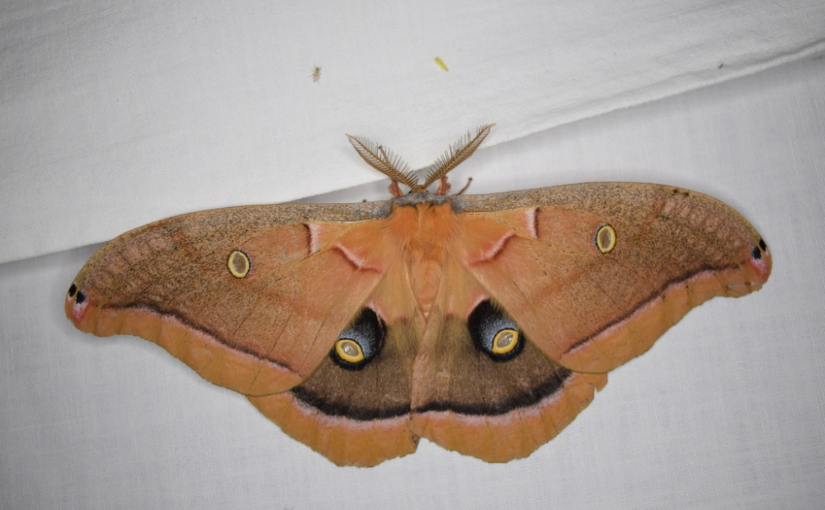Today’s post comes Kevin Gevaert, senior Discovery staff at Rondeau Provincial Park.
Not too many people are fond of the idea of staying in the forest when it gets dark.
It might sound sound discouraging or even scary to most, but experiencing Rondeau Provincial Park’s forest at night is something you won’t soon forget!
The billions of stars in the night sky, the sound of owls hooting, coyotes howling in the distance, and the odd mosquitos buzzing are all part of the magic that makes nighttime here at Rondeau so special.
Things really start to appear when we shine a bit of light on the subject!
A mamMOTH number
Mothing at Rondeau has become an increasingly popular activity in recent years.

Over 550 species have been recorded in the park, out of an estimated grand total of about 3000 species in all of Ontario. That’s a lot of moths!
These nocturnal insects come in a wide range of shapes, sizes, and colours. Every moth has its own unique markings, making every individual special in its own way.
Moths are a vast group of insects that are easy to find. They are commonly seen at many sources of light including backyard porch lights and UV black lights.

Moth-lovers can use a moth sheet to check out the species in their area. A moth sheet is simply an old white bed sheet with a yard light pointed at it.
On a good night, it’s common to find more than 50 species at a single moth sheet!
I see the light!
Rondeau’s Discovery staff and volunteers have been keeping track of moth and other insect records since the 1940s.
As for myself, my love of moths began a few years ago when I started taking pictures of the moths I spotted on the sides of the Visitor Centre walls before my morning shifts.

As I became more and more familiar with the species that would greet me at the beginning of my day, I started to wonder what else I could find.
This became a morning routine and eventually grew into a hobby that I also do after hours!
Celebrating National Moth Week
National Moth Week is a community science initiative that encourages everyone to leave a couple lights on through the night and see what is attracted to them.
You can contribute by submitting pictures of your winged visitors to iNaturalist. iNaturalist is a fantastic platform that makes it easy for beginners to get into identifying moths.

By taking part in this initiative, you are contributing to provincial records and helping to understand moth ecology, distribution, and diversity.
Mothing isn’t just a resource management initiative, it’s also a fun hobby, and a great way to spend an evening in nature.
The search to find new and provincially rare species is what drives me to continue to search. It’s always a thrill finding something I’ve never seen before.
Something as stunningly colorful as a Rosy Maple or an Io Moth can be the moth that grabs your attention and makes you a moth-lover!

National Moth Week encourages me to get out of the house and explore Rondeau’s incredible nocturnal diversity more often than I normally would.
I encourage everyone to leave a couple lights on at night. Who knows, you might be surprised at what shows up to your door!
